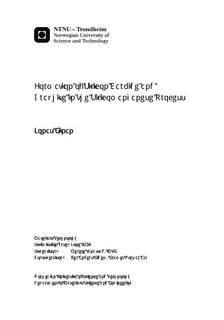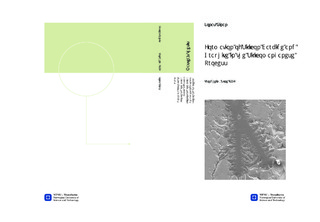| dc.contributor.advisor | Tangstad, Merete | nb_NO |
| dc.contributor.advisor | Eidem, Per Anders | nb_NO |
| dc.contributor.author | Einan, Jonas | nb_NO |
| dc.date.accessioned | 2014-12-19T13:26:21Z | |
| dc.date.available | 2014-12-19T13:26:21Z | |
| dc.date.created | 2012-11-08 | nb_NO |
| dc.date.issued | 2012 | nb_NO |
| dc.identifier | 566055 | nb_NO |
| dc.identifier | ntnudaim:7171 | nb_NO |
| dc.identifier.uri | http://hdl.handle.net/11250/249057 | |
| dc.description.abstract | When a liquid SiMn alloy is cooled, carbon is dissolved from the melt. The dissolved carbon either forms graphite or reacts with silicon from the melt to form SiC. The goal of this thesis has been to determine how temperature fluctuations affect the formation of SiC and graphite in the SiMn process. The focus of this thesis has been on dissolved carbon from the SiMn alloy due to cooling of the system, and the formation of graphite and SiC from this dissolution of carbon.The experiments conducted in this thesis is done with near constant silicon content, and temperature as the main variable in addition to carbon. The investigation was carried out by heating SiMn alloys several times, forming SiC and graphite. Carbon from the crucibles dissolved into the liquid SiMn alloy to reach equilibrium between carbon and silicon. This is equivalent to an industrial furnace where coke can dissolve carbon into the SiMn alloy, and thus form SiC or graphite. Accumulation of graphite and SiC is believed to be bad for furnace operations.SiC that forms in a Mn-Si-Fe-C saturated alloy can have an interface structure of granular, angular grains and as dendrites. When SiC accumulates in the Mn-Si-Fe-C system, clusters of SiC particles with intermediate SiMn metal can form. This study shows that SiC clusters is typically a decade larger than the average SiC particle. The SiC particles settles at the top of the melt when a cooling rate of 18°C per minute is used.Graphite that forms in the Mn-Si-Fe-C system have an interface structure of flakes. When the carbon content of the liquid SiMn is high enough, nucleation of new graphite grains happens instead of grain growth. The graphite flakes did not settle, but remained evenly dispersed in the SiMn alloy. This may be due to high viscosity in the melt, high friction on the graphite flakes or the buoyancy can be fairly equal to the drag of the graphite particles.The rate of formation of SiC and graphite in Mn-Si-Fe-C saturated alloys is reduced slightly by each consecutive temperature cycle. This suggest that SiC and graphite formed during the first cycles only partly dissolve into the liquid SiMn alloy to reach equilibrium in the system. | nb_NO |
| dc.language | eng | nb_NO |
| dc.publisher | Institutt for materialteknologi | nb_NO |
| dc.subject | ntnudaim:7171 | no_NO |
| dc.subject | MIMT Materialteknologi | no_NO |
| dc.subject | Materialutvikling og -bruk | no_NO |
| dc.title | Formation of Silicon Carbide and Graphite in the Silicomanganese Process | nb_NO |
| dc.type | Master thesis | nb_NO |
| dc.source.pagenumber | 119 | nb_NO |
| dc.contributor.department | Norges teknisk-naturvitenskapelige universitet, Fakultet for naturvitenskap og teknologi, Institutt for materialteknologi | nb_NO |

